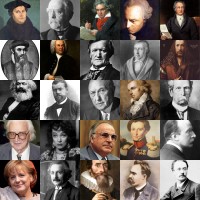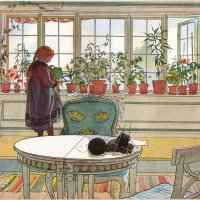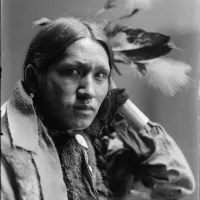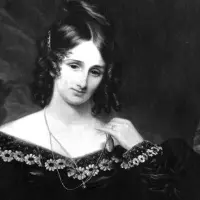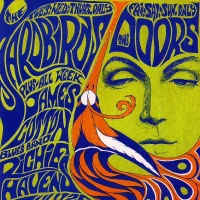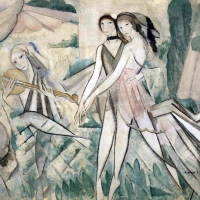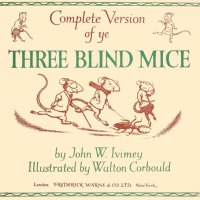 July
05
July
05
Tags
Chuck Close: The Master of Photorealism
 On the 5th of July 1940, American painter Chuck Close, broadly known for his photorealist portraits, was born in Monroe, Washington. His adventures in Photorealism began in the late 1960s when he started using photography to help him paint large-scale portraits, mostly in acrylic. The artist method consists of applying a grid on the photo and on the canvas and copying it cell by cell, although, he often uses different photographs for different parts of the picture, which enables him to employ both analytic and synthetic techniques. The latter means working with different focuses and bringing them together. The former, on the other hand, includes the artist’s commentary on the photographic view, translating the photographic perception of reality into fierce presence. Therefore his images are never naturalistic reproductions of reality but rather subjective transcriptions of the camera’s objective approach to it. According to Close, “The camera is objective. When it records a face it can’t make any hierarchical decisions about a nose being more important than a cheek. The camera is not aware of what it is looking at. It just gets it all down. I want to deal with the image it has recorded which is black and white, two-dimensional, and loaded with surface detail.” (Kristine Stiles, Peter Howard, Theories and Documents of Contemporary Art: A Sourcebook of Artists’ Writings)
On the 5th of July 1940, American painter Chuck Close, broadly known for his photorealist portraits, was born in Monroe, Washington. His adventures in Photorealism began in the late 1960s when he started using photography to help him paint large-scale portraits, mostly in acrylic. The artist method consists of applying a grid on the photo and on the canvas and copying it cell by cell, although, he often uses different photographs for different parts of the picture, which enables him to employ both analytic and synthetic techniques. The latter means working with different focuses and bringing them together. The former, on the other hand, includes the artist’s commentary on the photographic view, translating the photographic perception of reality into fierce presence. Therefore his images are never naturalistic reproductions of reality but rather subjective transcriptions of the camera’s objective approach to it. According to Close, “The camera is objective. When it records a face it can’t make any hierarchical decisions about a nose being more important than a cheek. The camera is not aware of what it is looking at. It just gets it all down. I want to deal with the image it has recorded which is black and white, two-dimensional, and loaded with surface detail.” (Kristine Stiles, Peter Howard, Theories and Documents of Contemporary Art: A Sourcebook of Artists’ Writings)
His fascination with portraits may have been prompted by a rare condition he suffers from called prosopagnosia, defined as face blindness or inability to recognize faces. Although, Close denies that his fixation with portraiture was an outcome of a conscious decision making: “I was not conscious of making a decision to paint portraits because I have difficulty recognizing faces. That occurred to me twenty years after the fact when I looked at why I was still painting portraits, why that still had urgency for me. I began to realize that it has sustained me for so long because I have difficulty in recognizing faces.”(Lisa Yuskavage, ‘Chuck Close’, BOMB  Magazine, Summer, 1995). Whilst his penchant for portraits was something that might have come to him naturally, the choice of his subjects, mainly his family members and friends, does not seem accidental at all. The beginning of Close’s professional career coincided with the emergence of Pop art, a current he never really wanted to be associated with. He stated: “I don’t want the viewer to see the whole head at once and assume that that’s the most important aspect of my painting. I am not making Pop personality posters like the ones they sell in the Village. That’s why I choose to do portraits of my friends – individuals that most people will not recognize. I don’t want the viewer to recognize the head of Castro and think he has understood my work.” (Stiles, Howard)
Magazine, Summer, 1995). Whilst his penchant for portraits was something that might have come to him naturally, the choice of his subjects, mainly his family members and friends, does not seem accidental at all. The beginning of Close’s professional career coincided with the emergence of Pop art, a current he never really wanted to be associated with. He stated: “I don’t want the viewer to see the whole head at once and assume that that’s the most important aspect of my painting. I am not making Pop personality posters like the ones they sell in the Village. That’s why I choose to do portraits of my friends – individuals that most people will not recognize. I don’t want the viewer to recognize the head of Castro and think he has understood my work.” (Stiles, Howard)
Throughout his career, Close has employed various drawing and painting techniques, revealing the broadness and richness of the medium of portraiture. Among many others, he has used ink, graphite, watercolour, pastel, conté crayon, finger painting, and different printmaking techniques, but as from 1967 he has consciously decided not to use the paintbrush. “I threw away my tools”, Close said. “I chose to do things I had no facility with. The choice not to do something is in a funny way more positive than the choice to do something. If you impose a limit to not do something you’ve done before, it will push you to where you’ve never gone before.” (M. Norman, Contemporary Art Legend Chuck Close Talks About Painting, The Plain Dealer, September 1, 2009). Another challenge in his painting career was set not by himself but by fate. In 1988 he suffered a spinal artery collapse, which left him severely paralyzed. Against all odds, he continued to paint and produce work that is highly acclaimed within the art world. His more recent portraits are made up from a shimmering, fragile grid set on the diagonal.
As for the term ‘Photorealism’, it was coined in 1969 by the American author and art dealer Louis K. Meisel. It evolved from Pop art and as a counter-reaction to Abstract Expressionism and the art movements originating from Minimalist in the late 1960s and early 1970s in the United States. However, some recognise Photorealism as a concept and trend as early as the 1950s.
 Thomas Albright explains it as follows: “Photo Realism, it might be argued, appeared first not in art but in the “objectivist” novel. One of the most lucid descriptions of the characteristics of Photo Realist painting appears in an introductory essay by Roland Barthes to Alain Robbe-Grillet’s 1957 novel, Jealousy – eight to ten years before Photo Realist painting began. In the classical conception of painting, Barthes noted, “a site is frozen in eternity; the spectator has accorded the painter power of attorney to circulate around the object, to explore with his delegated eyes its shadows and its prospect so that every spectator after the painter himself must look at the picture with the painter’s eyes.” By contrast, Barthes wrote, the new objectivist esthetic presents “no alibis, no resonance, no depth, keeping to the surface of things, examining without emphasis, favouring no one quality. The function of language is not a raid on the absolute, a violation of the abyss, but a progression of names over a surface. …The object has no being beyond phenomenon; it is not ambiguous, not allegorical, not even opaque. … [It is] without associations, and without references… refusing with all the stubbornness of its thereness to invove the reader in an elsewhere, whether functional or substantial.”” (Thomas Albright, Art in the San Francisco Bay Area, 1945-1980: An illustrated History)
Thomas Albright explains it as follows: “Photo Realism, it might be argued, appeared first not in art but in the “objectivist” novel. One of the most lucid descriptions of the characteristics of Photo Realist painting appears in an introductory essay by Roland Barthes to Alain Robbe-Grillet’s 1957 novel, Jealousy – eight to ten years before Photo Realist painting began. In the classical conception of painting, Barthes noted, “a site is frozen in eternity; the spectator has accorded the painter power of attorney to circulate around the object, to explore with his delegated eyes its shadows and its prospect so that every spectator after the painter himself must look at the picture with the painter’s eyes.” By contrast, Barthes wrote, the new objectivist esthetic presents “no alibis, no resonance, no depth, keeping to the surface of things, examining without emphasis, favouring no one quality. The function of language is not a raid on the absolute, a violation of the abyss, but a progression of names over a surface. …The object has no being beyond phenomenon; it is not ambiguous, not allegorical, not even opaque. … [It is] without associations, and without references… refusing with all the stubbornness of its thereness to invove the reader in an elsewhere, whether functional or substantial.”” (Thomas Albright, Art in the San Francisco Bay Area, 1945-1980: An illustrated History)
